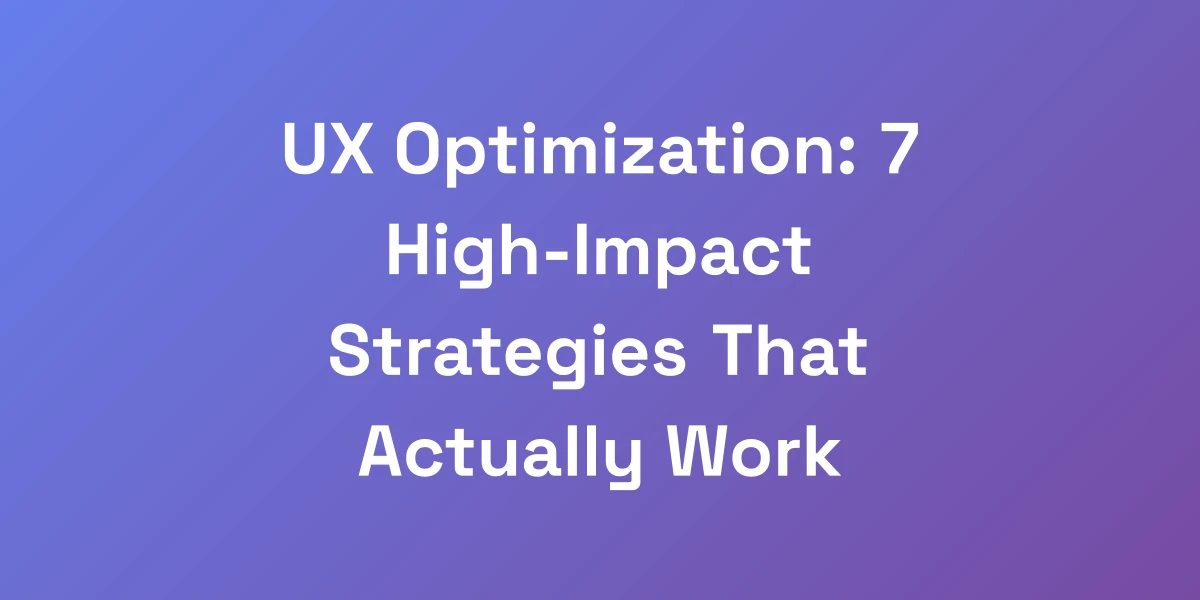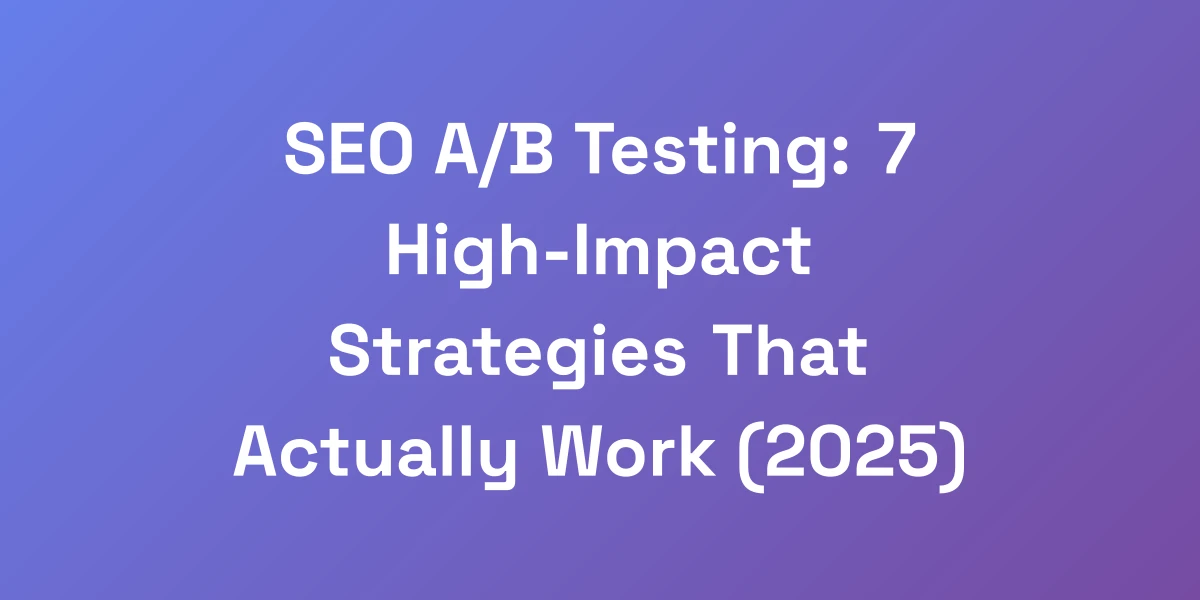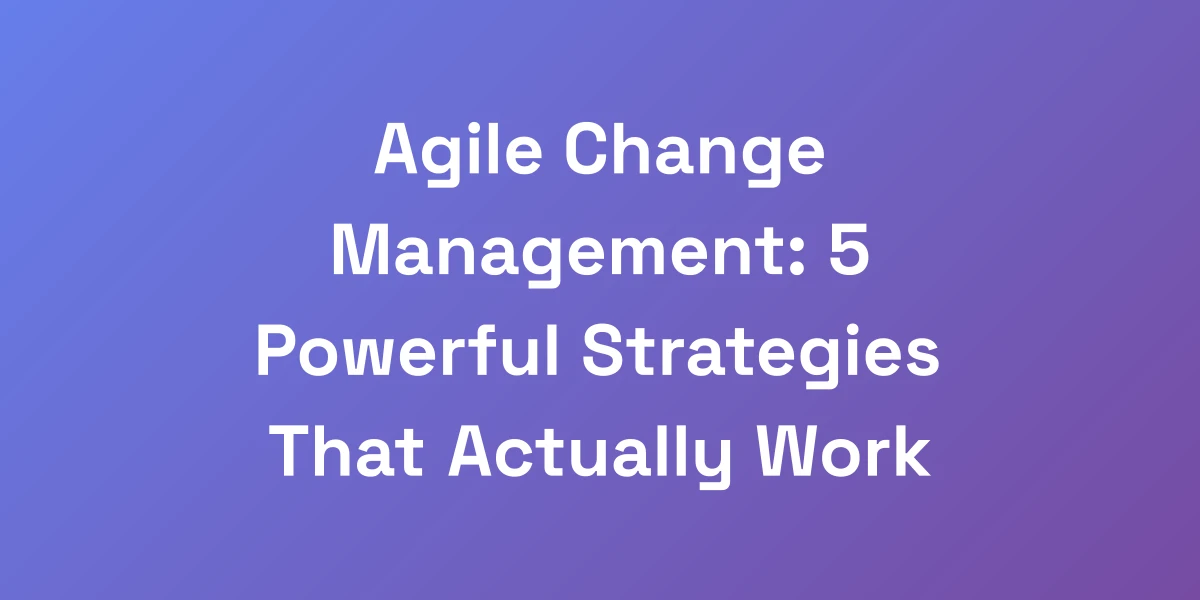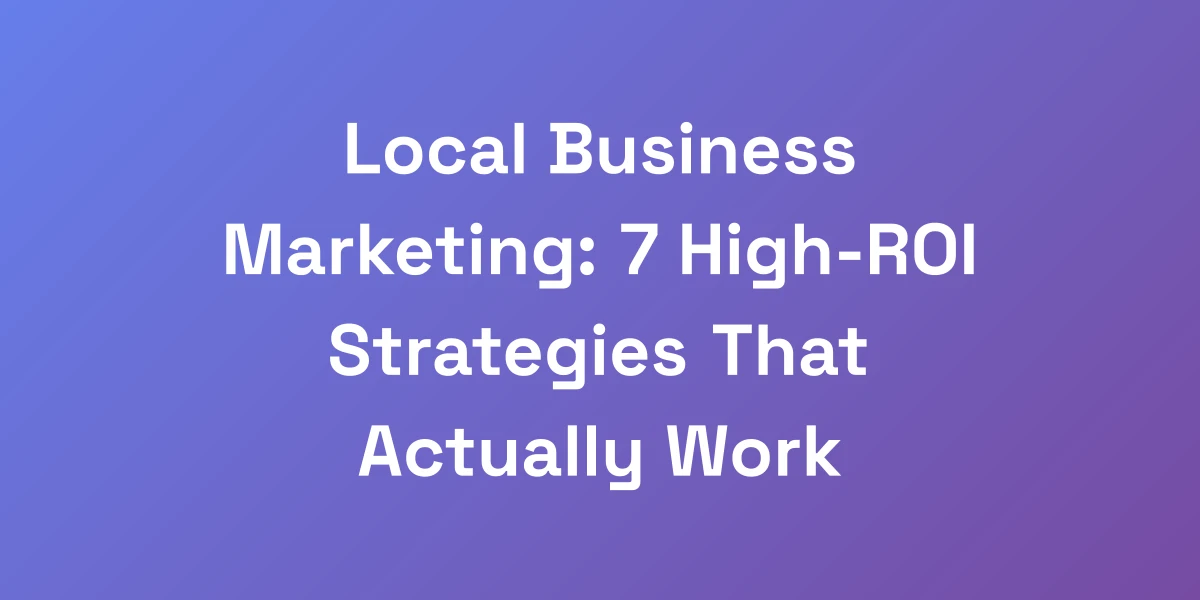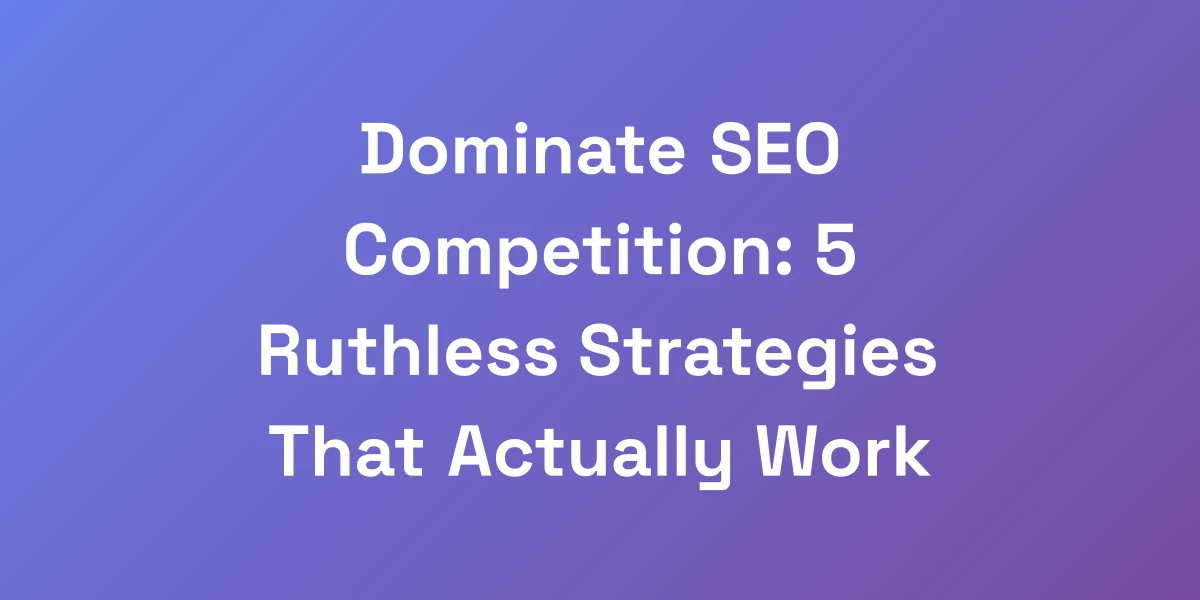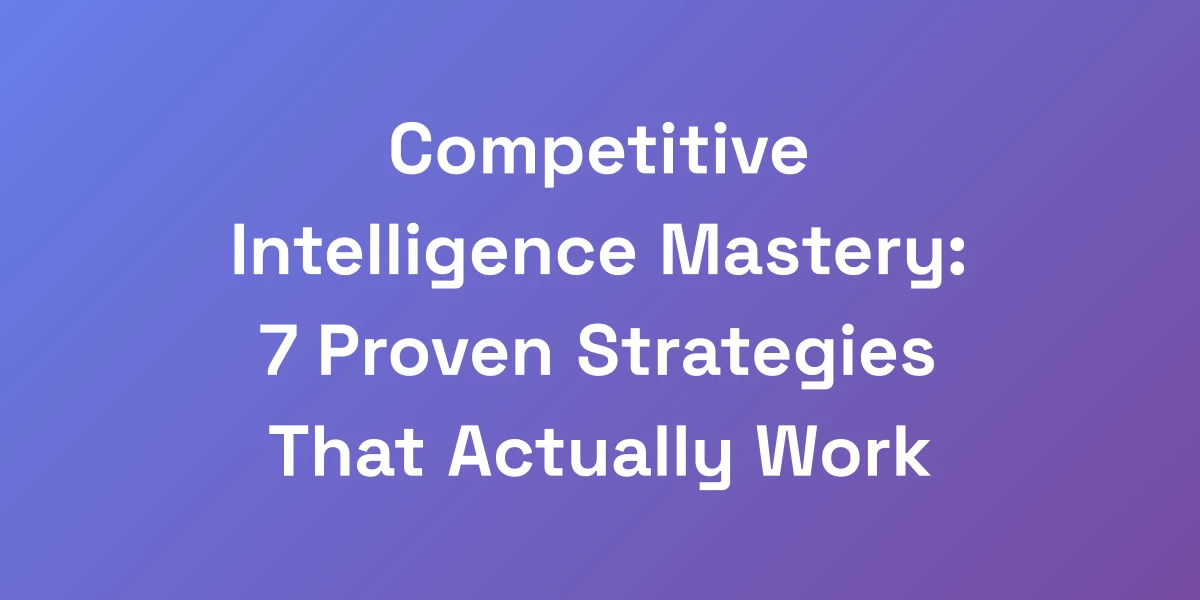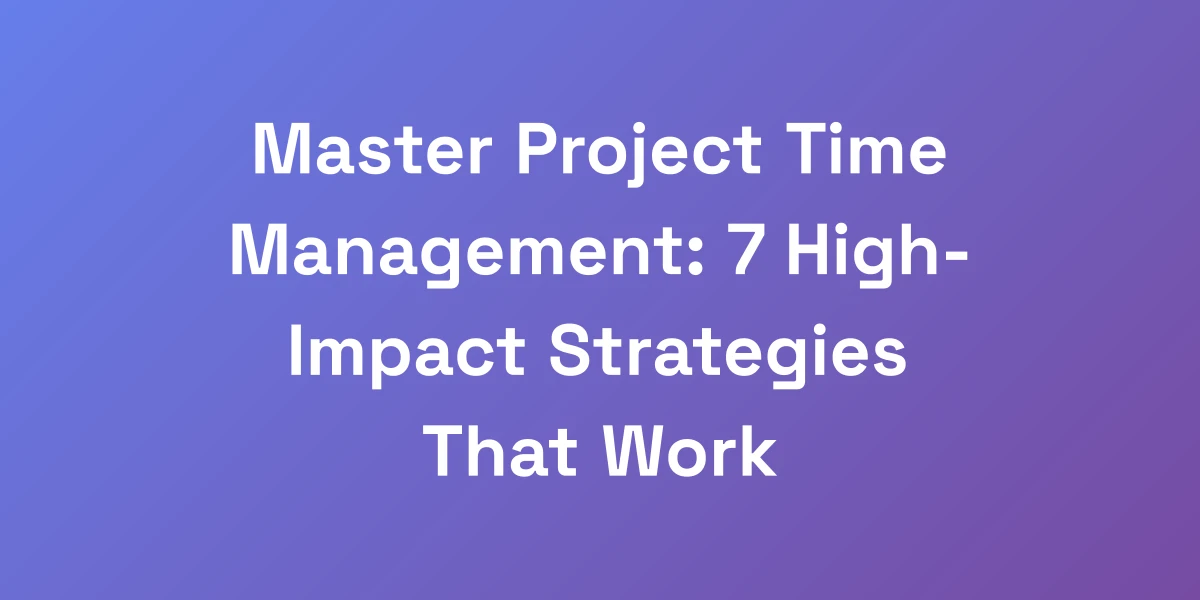
Master Project Time Management: 7 High-Impact Strategies That Work
Mar 17, 2025 | By [email protected]
Introduction
Let’s get real for a moment. Project time management isn’t just a soft skill; it’s the backbone of every successful project. Imagine juggling flaming swords while riding a unicycle. That’s what managing time without the right strategies feels like.
We’ve all been there—deadlines looming, tasks piling up, and the constant pressure of getting everything done on time. It’s chaotic, stressful, and frankly, unsustainable.
But what if we told you there’s a way to transform this chaos into a well-oiled machine? To turn every minute into a productive, value-driving asset?
In this article, we’re diving deep into 7 high-impact strategies that will revolutionize your approach to project time management. Ready to elevate your game?
The Hidden Cost of Poor Time Management in Projects
Let me hit you with some truth: 67% of projects fail because people suck at managing time. Project management statistics show that this lack of effective time management is a critical factor in project failures.
Here’s the thing – every minute wasted is money burned. I’ve seen countless project managers grinding 80-hour weeks, thinking they’re being productive, when they’re actually just being busy.
The difference between a 6-figure project manager and a 7-figure one isn’t just experience – it’s their ability to weaponize their time. Let’s break down what’s really killing your productivity and how to fix it.
The Real Cost of Project Delays
Delays aren’t just inconvenient; they’re expensive. When a project drags, costs spiral. Additional resources are thrown in, deadlines are extended, and client trust erodes.
Consider the case of Whirlpool Corporation. When their projects across five global regions faced delays, they turned to Smartsheet. The result? Enhanced visibility and control that kept projects on track and preserved client relationships.
- Increased overtime costs
- Opportunity costs from missed market windows
- Damaged reputation and future business prospects
These hidden costs add up, making poor time management a silent killer of project success.
Why Traditional Time Management Fails
Traditional time management methods, like basic to-do lists and generic scheduling, fall short in the dynamic environment of project management.
Why? Because they’re too rigid and don’t account for the complexities and variable nature of projects. They miss the psychological triggers that drive productivity and fail to prioritize tasks effectively.
Projects need more than just a list; they need a strategic approach that aligns with both team capabilities and project goals.
The Productivity-Profit Connection
Here’s a simple equation: Productivity = Profit. The more efficiently we manage our time, the more profit we generate.
Let’s take IBM’s hybrid Agile methodology as an example. By blending Agile with traditional approaches, they reduced project timelines by 20% while maintaining rigorous documentation and stakeholder communication.
This isn’t just about doing more in less time; it’s about doing the right things that drive profit. When productivity aligns with project goals, profits follow naturally.
Common Time Wasters in Project Management
What’s eating up your time without you even realizing it? Let’s identify the usual suspects:
- Meetings without clear agendas: They drain time without delivering results.
- Unstructured communication: Endless email threads and unclear directives cause confusion and delays.
- Repetitive tasks: Manual data entry and other mundane tasks consume valuable hours.
Recognizing these time wasters is the first step toward eliminating them and reclaiming your time.
The Mindset Shift Required for Effective Time Management
To master time management, we need to adopt a new mindset. It’s not about managing time; it’s about maximizing time’s potential. In acquiring the necessary skills, you can transform how you perceive and utilize your time.
Think of time as your most valuable asset. Every decision you make about how to spend it directly impacts your project’s success. This shift from seeing time as a constraint to viewing it as a resource to be leveraged is crucial.
Ask yourself: Are you focusing on high-impact activities, or are you lost in a sea of low-value tasks?
The Time Maximizer Framework for Project Managers
Stop following outdated project management playbooks. I’m going to show you my Time Maximizer Framework that’s helped companies 10x their project completion rates.
This isn’t your standard “make a to-do list” advice. We’re talking about a systematic approach that combines psychological triggers with proven time management techniques.
The key is creating leverage points in your day where every minute spent gives you 10 minutes back. This framework isn’t just about managing time – it’s about multiplying it.
The 80/20 Rule of Project Time Management
Ever heard of the Pareto Principle? It states that 80% of your results come from 20% of your efforts. In project management, identifying and focusing on that critical 20% can transform your productivity.
How? By zeroing in on tasks that have the highest impact on your project’s success. For instance:
- Key Milestones: Focus on tasks that drive the project forward significantly.
- Critical Path Activities: Identify and prioritize tasks that determine the project timeline.
This approach ensures that you’re not just busy but busy doing what truly matters.
Time Blocking for Maximum Impact
Time blocking isn’t just scheduling; it’s about dedicating specific chunks of time to high-priority tasks.
How do we implement it?
- Identify High-Impact Tasks: Allocate blocks for tasks that drive the project forward.
- Minimize Distractions: During these blocks, eliminate interruptions to maintain focus.
- Regular Reviews: Adjust blocks based on project needs and progress.
By committing chunks of time to specific tasks, we ensure deeper focus and higher productivity.
The Decision Matrix for Task Prioritization
Decision fatigue can cripple productivity. The Decision Matrix helps us prioritize tasks based on their urgency and importance.
Here’s how it works:
- Quadrant 1: Urgent and Important – Do these tasks immediately.
- Quadrant 2: Important but Not Urgent – Schedule these for focused time blocks.
- Quadrant 3: Urgent but Not Important – Delegate these tasks.
- Quadrant 4: Neither Urgent nor Important – Eliminate or minimize these distractions.
This method clarifies what truly needs your attention, allowing you to focus on what drives the project forward. For a deeper understanding, refer to the Decision IQ Benchmark White Paper 2023.
Energy Management vs. Time Management
Time management is about scheduling tasks, but energy management is about optimizing your energy levels to execute those tasks effectively.
How do we balance the two?
- Identify Peak Energy Times: Schedule high-impact tasks during times when you’re most alert and focused.
- Take Strategic Breaks: Short breaks can rejuvenate your energy, enhancing overall productivity.
- Maintain Work-Life Balance: Ensuring you’re not burned out keeps your energy levels sustainable.
By aligning your tasks with your energy levels, you maximize both productivity and quality of work.
Automation and Delegation Strategies
We lived in the age of hustle, but smart work trumps hard work every time. Automation and delegation are your best allies in project time management.
Here’s how we implement them:
- Identify Repetitive Tasks: Use tools like Clockify or Toggl Track to automate time tracking and reporting.
- Leverage Technology: Implement project management software that automates task assignments and updates.
- Delegate Effectively: Assign tasks to team members based on their strengths and capacities.
- Use Integration Tools: Tools like Zapier can connect different systems, automating workflows across platforms.
By offloading repetitive tasks and automating processes, we free up valuable time to focus on strategic activities. Additionally, exploring SEO automation software can significantly enhance your efficiency and results.
The Weekly Power Planning Method
Planning your week with precision can set the tone for productivity. The Weekly Power Planning Method ensures that every week is strategically aligned with your project goals.
Here’s a step-by-step guide:
- Review Last Week: Analyze what worked and what didn’t. Identify time wasters and areas for improvement.
- Set Weekly Goals: Define clear, achievable objectives that align with your project milestones.
- Allocate Time Blocks: Assign specific time slots for high-priority tasks using time blocking.
- Plan for Flexibility: Allow buffer time for unexpected tasks or emergencies.
- End-of-Week Review: Assess progress and adjust the next week’s plan accordingly by considering Q4 benchmarks and 2024 wrap up.
This method keeps you proactive rather than reactive, ensuring consistent progress and adaptability.
High-Leverage Time Management Tools and Systems
Listen, I’ve tested dozens of project management tools, and most of them are just fancy to-do lists. What you need is a system that forces multiplication. I’m going to show you the exact tools and systems that helped my clients save an average of 15 hours per week while doubling their project completion rates.
These aren’t just tools – they’re weapons of mass productivity when used correctly. The key is not the tool itself, but how you integrate it into your workflow to create compound time savings. Discover the best time management software of 2023-2024 to enhance your efficiency.
Project Management Software Selection Guide
Choosing the right project management software is critical. It’s not about having the most features but about finding a system that aligns with your workflow.
Consider these factors:
- Ease of Use: The tool should be intuitive and user-friendly, reducing the learning curve.
- Integration Capabilities: It should seamlessly integrate with other tools you use, like email, calendars, and communication platforms.
- Customization: Look for software that can be tailored to fit your specific project needs.
- Scalability: Ensure it can grow with your projects and team size.
Tools like Smartsheet and Trello are excellent choices, offering robust features that enhance visibility and control over your projects. For businesses looking to expand their digital capabilities, exploring the best SEO services for small business can also provide significant advantages.
Time Tracking Tools That Actually Work
Time tracking is more than just logging hours; it’s about gaining insights into how time is spent and identifying areas for improvement.
Here are top picks:
- Clockify: Praised for its ease of use in tracking time across projects and tasks, generating reports, and calculating billable hours. It offers over 80 integrations with popular tools.
- Toggl Track: Provides accurate time reports with easy filtering and sorting options, allowing users to analyze productivity patterns. It offers a free tier for up to five users.
Implementing these tools can help you monitor productivity, identify bottlenecks, and make data-driven decisions to optimize time management.
Automation Tools for Repetitive Tasks
Automation is the secret sauce that turns good project managers into great ones. It eliminates repetitive tasks, reduces errors, and frees up your time for strategic work.
Top automation tools include:
- Zapier: Connects different apps and automates workflows, saving you countless hours on manual tasks.
- IFTTT: Simplifies task automation by allowing you to create custom automations across various platforms.
By integrating these tools into your workflow, you can automate everything from email notifications to data entry, significantly boosting your productivity.
Communication Systems for Time Optimization
Efficient communication is key to minimizing time wastage. Cluttered inboxes and endless meetings can sink your productivity.
Implementing streamlined communication systems can help:
- Slack: Offers organized channels for different projects, reducing the clutter of email threads.
- Microsoft Teams: Integrates with Office 365, providing a centralized platform for communication and collaboration.
These tools facilitate quick, organized communication, ensuring that everyone stays on the same page without wasting time.
Calendar Management Solutions
Your calendar is your roadmap to the day. Managing it effectively can prevent overbooking, ensure you allocate time for high-priority tasks, and maintain a healthy work-life balance.
Top calendar management solutions include:
- Google Calendar: Simple, flexible, and integrates with numerous other tools for seamless scheduling.
- Outlook Calendar: Perfect for those deeply embedded in the Microsoft ecosystem, offering powerful scheduling features.
Utilize features like color-coding, reminders, and time blocking to make the most out of your calendar and keep your day structured and productive.
Integration Strategies for Maximum Efficiency
Having top-notch tools is one thing, but integrating them effectively is where the magic happens.
Here’s how to ensure maximum efficiency:
- Unified Dashboard: Use tools that offer dashboards, bringing all your project data into a single view for easy monitoring.
- APIs and Connectors: Leverage APIs to connect different tools, enabling smooth data flow and reducing manual data entry.
- Consistent Workflow: Maintain a consistent workflow across all tools to ensure seamless transitions and reduce friction.
Effective integration turns disparate tools into a cohesive system, amplifying their individual strengths and creating compound productivity gains.
The Art of Time-Based Decision Making
Most project managers make decisions based on urgency instead of impact. That’s like choosing which fire to put out while your house is burning down.
I’m going to teach you my Impact-Time Matrix that helps you make decisions that compound over time. When you start thinking in terms of time ROI, everything changes.
You’ll learn how to identify high-leverage activities that give you exponential returns on your time investment. This isn’t about working harder – it’s about making better decisions faster.
The Impact-Time Decision Framework
This framework helps you evaluate tasks based on their impact and the time they consume.
Here’s how it works:
- High Impact, Low Time: Prioritize these tasks as they offer the greatest return on investment.
- High Impact, High Time: Break these tasks down or delegate parts to manage time effectively.
- Low Impact, Low Time: Handle these quickly, but don’t let them distract from higher-impact tasks.
- Low Impact, High Time: Minimize or eliminate these tasks to free up time for more valuable activities.
By categorizing tasks this way, we ensure our decisions are aligned with long-term project success.
Rapid Decision-Making Protocols
Time is of the essence when making decisions. Deliberate too long, and you lose momentum.
Here’s our protocol:
- Define the Decision: Clearly understand what needs to be decided and its impact on the project.
- Gather Information: Collect only the essential data needed to make an informed choice.
- Set a Time Limit: Allocate a specific timeframe to make the decision, preventing procrastination.
- Evaluate Options Quickly: Use the Impact-Time Decision Framework to assess options swiftly.
- Decide and Act: Make the decision and implement it immediately.
This protocol ensures that decisions are made promptly without sacrificing quality.
Stakeholder Time Management
Managing stakeholders effectively can save you a ton of time. Misaligned expectations and poor communication are major time drains.
Here’s how we manage stakeholder time:
- Clear Communication: Define roles, responsibilities, and expectations from the get-go.
- Regular Updates: Keep stakeholders informed with concise, relevant updates to prevent unnecessary back-and-forth.
- Set Boundaries: Establish clear guidelines for communication and decision-making processes.
Effective stakeholder management ensures that everyone is on the same page, reducing the time spent on clarifications and revisions.
Crisis Time Management
Crises are inevitable, but how you manage them can make or break your project.
Here’s our strategy:
- Preparedness: Have a crisis management plan in place before issues arise.
- Rapid Response Teams: Designate specific team members to handle crises, ensuring swift action.
- Prioritization: Focus on resolving high-impact issues first to minimize project disruption.
- Post-Crisis Review: Analyze what happened and how it was handled to improve future responses.
By being prepared and responsive, we can mitigate the impact of crises and keep projects on track.
Long-term vs. Short-term Time Investments
Balancing long-term and short-term time investments is crucial for sustained project success.
Here’s how we do it:
- Short-term Investments: Handle immediate tasks that keep the project moving.
- Long-term Investments: Allocate time to activities that build project resilience and future-proof your processes.
By strategically balancing these investments, we ensure both immediate progress and long-term sustainability.
The Time-Value Analysis Method
This method helps us evaluate the value of our time investment in various tasks.
Here’s the process:
- Identify Tasks: List all tasks and categorize them based on their impact and time requirement.
- Assign Value: Determine the value each task brings to the project’s success.
- Analyze ROI: Compare the time spent against the value generated to prioritize tasks.
- Optimize: Reallocate time from low-ROI tasks to high-ROI ones.
This method ensures that our time investments are aligned with maximizing project value.
